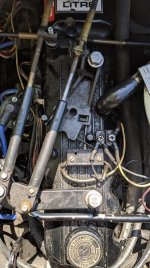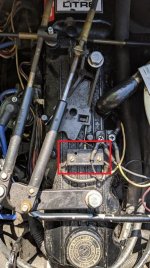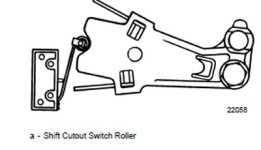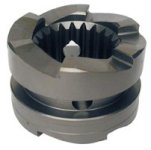Good Evening folks,
I'm the new proud owner of a 1988 Donzi 17R (believe that's the model). I bought it knowing it needed a "tune up" but not quite sure what all that entails typically. Here's a list of things I've done so far:
Plugs/Wires
Cap/Rotor
Fresh Oil/Filter Change
Fresh Gear Oil Change
Rebuilt Carburetor (2 bbl) with new gaskets, float, and needles.
New Battery
The issue I'm noticing is a bit of roughness from the engine. Currently I can't put it all the way back to center (neutral) without it dying. I've adjusted the fuel mixture needle to recommended spec, and adjusted the idle screw. If I have it running about 1000rpm it runs fairly smooth, but doesn't seem to want to die, just at anything lower than 1000rpm. I'm not 100% sure what the typical idle speed for these engines are, but aside from that I'm not sure why the boat is dipping so hard and dying when in center position. If I'm quick about it I can get it to go from neutral (acceleration) to in gear (reverse or forward) and it'll pick up the rpms again. Thinking it could have been the gas, I did bypass the current setup for a fresh bit of fuel. I work on cars typically, but I know I/O's aren't that much different, but I wanted to throw this out here just in case I'm missing something simple.
Thanks in advance!
I'm the new proud owner of a 1988 Donzi 17R (believe that's the model). I bought it knowing it needed a "tune up" but not quite sure what all that entails typically. Here's a list of things I've done so far:
Plugs/Wires
Cap/Rotor
Fresh Oil/Filter Change
Fresh Gear Oil Change
Rebuilt Carburetor (2 bbl) with new gaskets, float, and needles.
New Battery
The issue I'm noticing is a bit of roughness from the engine. Currently I can't put it all the way back to center (neutral) without it dying. I've adjusted the fuel mixture needle to recommended spec, and adjusted the idle screw. If I have it running about 1000rpm it runs fairly smooth, but doesn't seem to want to die, just at anything lower than 1000rpm. I'm not 100% sure what the typical idle speed for these engines are, but aside from that I'm not sure why the boat is dipping so hard and dying when in center position. If I'm quick about it I can get it to go from neutral (acceleration) to in gear (reverse or forward) and it'll pick up the rpms again. Thinking it could have been the gas, I did bypass the current setup for a fresh bit of fuel. I work on cars typically, but I know I/O's aren't that much different, but I wanted to throw this out here just in case I'm missing something simple.
Thanks in advance!





